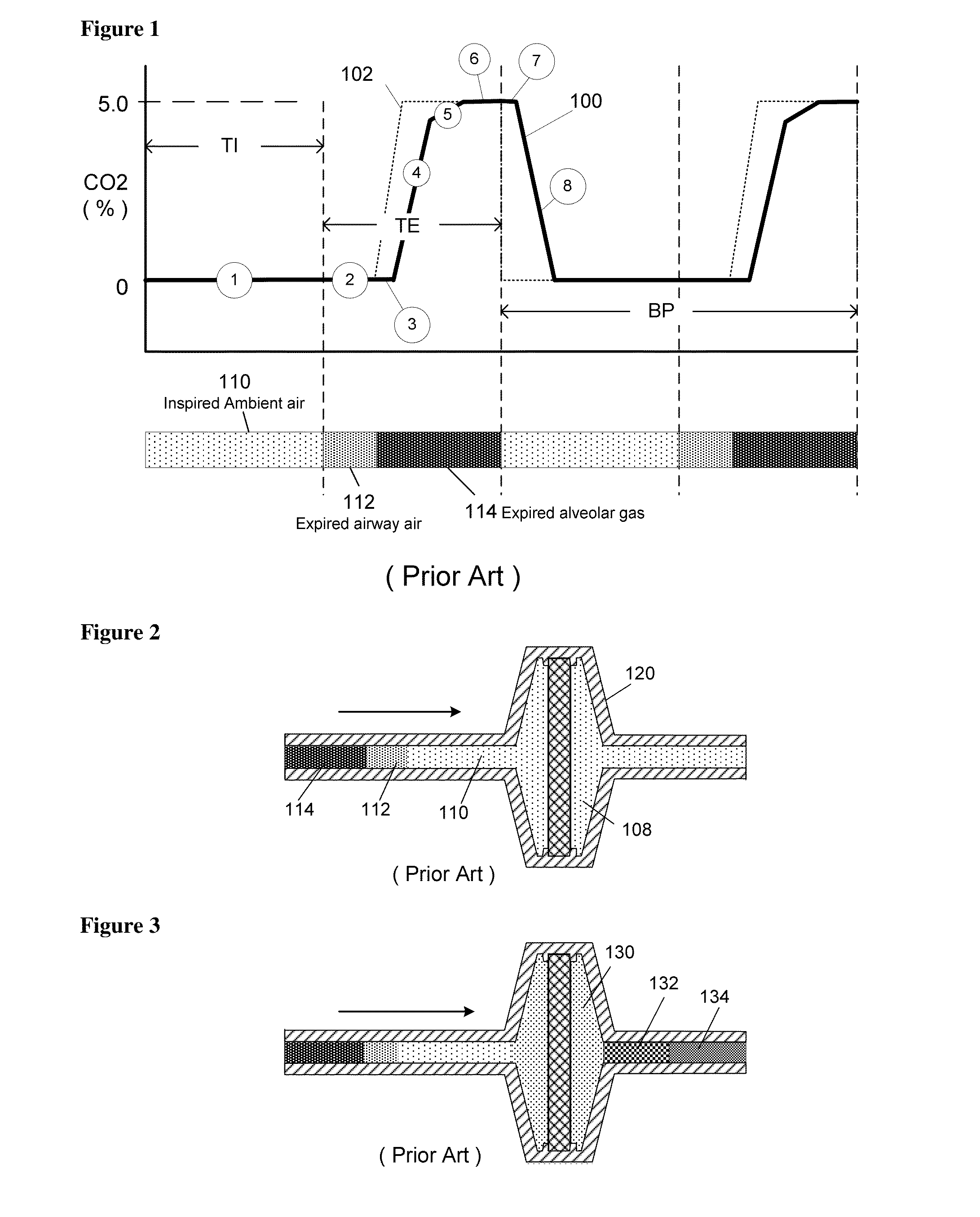Neonatal carbon dioxide measurement system
a carbon dioxide and measurement system technology, applied in the field of breath measurement and monitoring, can solve the problems of intrinsic response time of the sensor technology being employed, preventing accurate measurements etc., to achieve accurate measurement of co2 in a breath, disturbing the homogeneity and purity of the different and discrete sections
- Summary
- Abstract
- Description
- Claims
- Application Information
AI Technical Summary
Benefits of technology
Problems solved by technology
Method used
Image
Examples
Embodiment Construction
[0031]FIG. 1 graphically describes capnometry, when used for non-infant patients. Typically the breath period (BP), breath rate and expiratory time (TE) is slow enough for the CO2 signal 100 from the capnometry sensor to register the full amplitude of the actual CO2 102 in the breath sample, and an accurate etCO2 result is reported. The capnometry curve can be broken down into 7 parts. The inspiratory part 1 of the breathing curve, during which there is basically no signal response from the Capnometer; the beginning of exhalation 2 during which again there is basically no signal response from the Capnometer; a sensor lag time 3 which is a brief lag period or delay before the sensor responds to the first CO2 gas molecules in the exhalation gas seen by the sensor's sensing element; an increasing signal in the middle of exhalation 4 due to the increasing percentage 5 of CO2 being expelled as gas from deeper in the lung is expelled; a plateau 6 representative of alveolar gas and when th...
PUM
 Login to View More
Login to View More Abstract
Description
Claims
Application Information
 Login to View More
Login to View More - R&D
- Intellectual Property
- Life Sciences
- Materials
- Tech Scout
- Unparalleled Data Quality
- Higher Quality Content
- 60% Fewer Hallucinations
Browse by: Latest US Patents, China's latest patents, Technical Efficacy Thesaurus, Application Domain, Technology Topic, Popular Technical Reports.
© 2025 PatSnap. All rights reserved.Legal|Privacy policy|Modern Slavery Act Transparency Statement|Sitemap|About US| Contact US: help@patsnap.com



